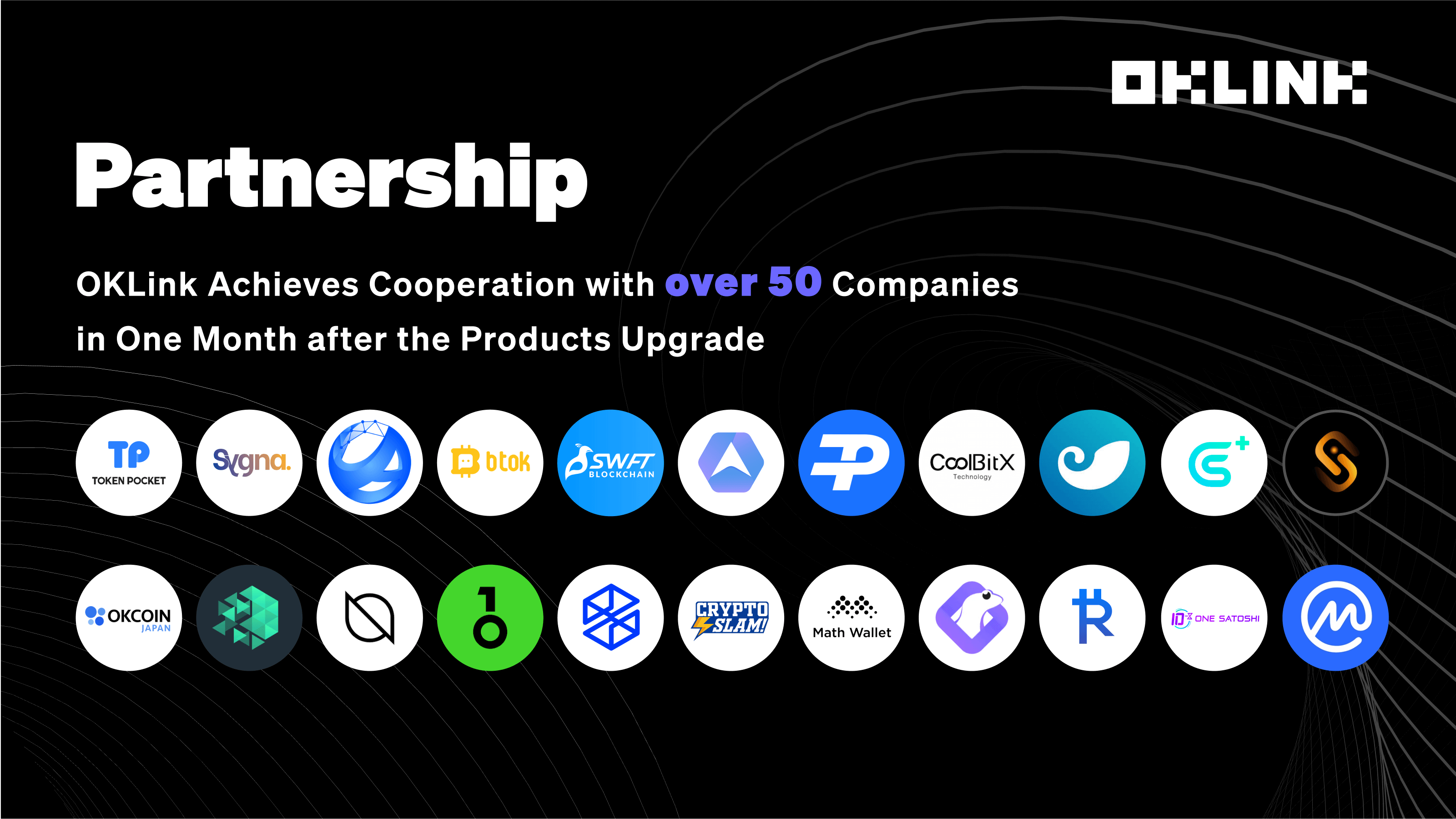
OKLink Achieves Cooperation with Over 50 Enterprises in One Month After the Upgrade
By clicking "Accept", you agree to the storing of cookies on your device to improve your browsing experience, analyze web traffic, and enhance security.
Choose the cryptocurrency type to search and trace the on-chain transaction.
Choose “Input”or“Output” option to trace the flow of the transaction.
Based on personal requirements to look for more information.
Choose BTC to look for more valuable information.
Choose “Pool’s hashrate rank” to get Real/Estimated hashrate and rankings.
Choose “More Charts” to get general statistics, block and mining, address and trade.
Choose ETH to look for more valuable information.
ERC20 Token List contains token’s rank, market cap and address number.
Rich List contains the Top100 richest Ethereum addresses and the details.
OKLink already integrates the blockchain explorer of BTC, ETH, DASH, etc.
The first blockchain explorer of the industry to report hashrate during the 3rd Bitcoin Halving.
Blockchain
By design, a blockchain is resistant to modification of the data. It is “an open, distributed ledger that can record transactions between two parties efficiently and in a verifiable and permanent way”. For use as a distributed ledger, a blockchain is typically managed by a peer-to-peer network collectively adhering to a protocol for inter-node communication and validating new blocks. Once recorded, the data in any given block cannot be altered retroactively without alteration of all subsequent blocks, which requires consensus of the network majority. Although blockchain records are not unalterable, blockchains may be considered secure by design and exemplify a distributed computing system with high Byzantine fault tolerance. Decentralized consensus has therefore been claimed with a blockchain.
A blockchain,is a growing list of records, called blocks, that are linked using cryptography. Each block contains a cryptographic hash of the previous block, a timestamp, and transaction data (generally represented as a Merkle tree).
Node
A blockchain exists out of blocks of data. These blocks of data are stored on nodes (compare it to small servers). Nodes can be any kind of device (mostly computers, laptops or even bigger servers). Nodes form the infrastructure of a blockchain. All nodes on a blockchain are connected to each other and they constantly exchange the latest blockchain data with each other so all nodes stay up to date. They store, spread and preserve the blockchain data, so theoretically a blockchain exists on nodes. A full node is basically a device (like a computer) that contains a full copy of the transaction history of the blockchain.
When a miner attempts to add a new block of transactions to the blockchain, it broadcasts the block to all the nodes on the network. Based on the block’s legitimacy (validity of signature and transactions), nodes can accept or reject the block. When a node accepts a new block of transactions, it saves and stores it on top of the rest of the blocks it already has stored. In short, here is what nodes do:
Decentralization
Decentralization is the process of distributing and dispersing power away from a central authority. Most financial and governmental systems, which are currently in existence, are centralized, meaning that there is a single highest authority in charge of managing them, such as a central bank or state apparatus. There are several crucial disadvantages to this approach, stemming from the fact that any central authority also plays the role of a single point of failure in the system: any malfunction at the top of the hierarchy, whether unintentional or deliberate, inevitably has a negative effect on the entire system. Bitcoin was designed as a decentralized alternative to government money and therefore doesn’t have any single point of failure, making it more resilient, efficient and democratic. Its underlying technology, the Blockchain, is what allows for this decentralization, as it offers every single user an opportunity to become one of the network’s many payment processors. Since Bitcoin’s appearance, many other cryptocurrencies, or altcoins, have appeared, and most of the times they also use the Blockchain in order to achieve some degree of decentralization.
Blockchain Explorer
The blockchain explorer can be defined simply as a browser for the blockchain, which could record and display all relevant data available on public blockchain.
Distributed Ledger
Distributed ledgers are a type of database that are spread across multiple sites, countries or institutions. Records are stored one after the other in a continuous ledger. Distributed ledger data can be either “permissioned” or “unpermissioned” to control who can view it.
Hashrate
Hashrate is the number of hashes that can be performed by a bitcoin miner in a given period of time (usually a second).
